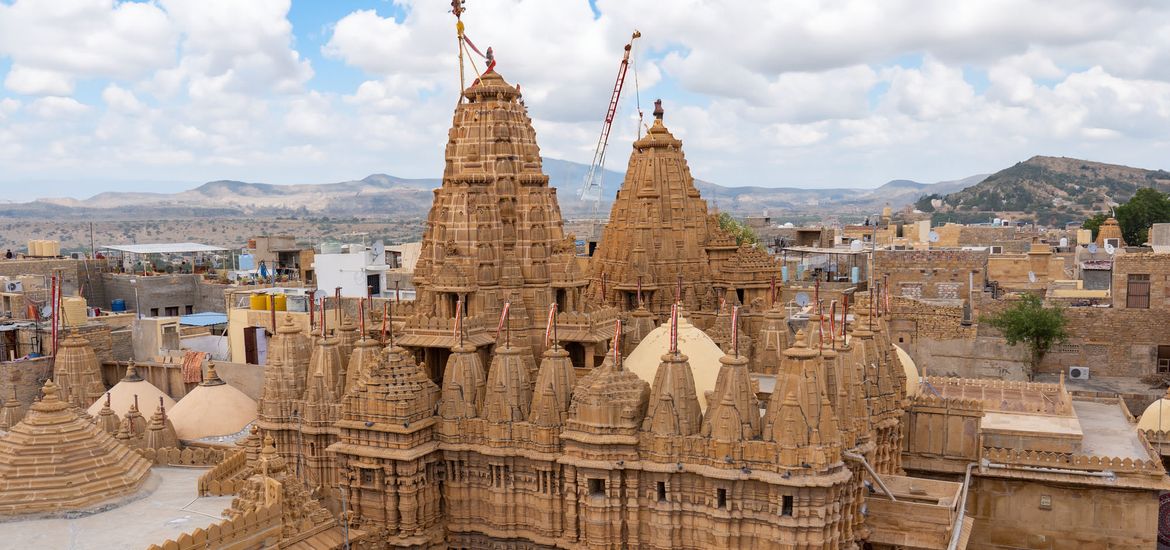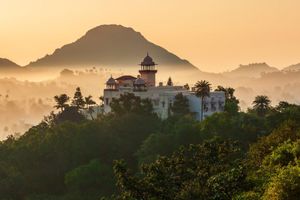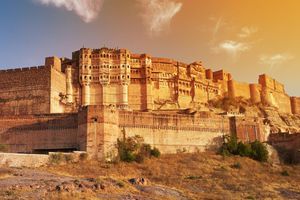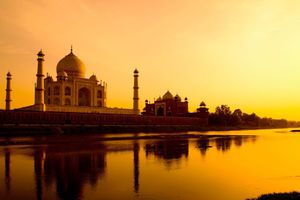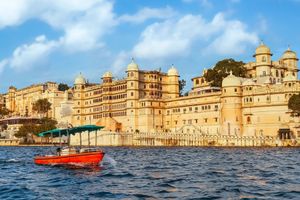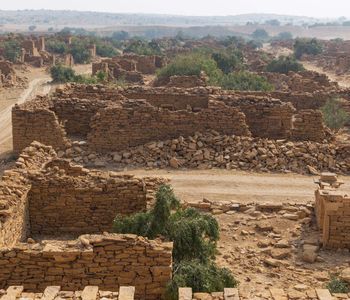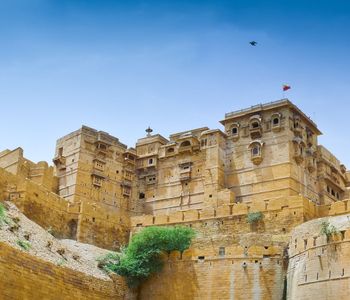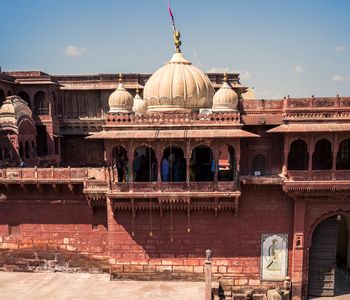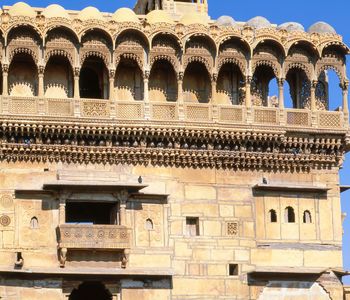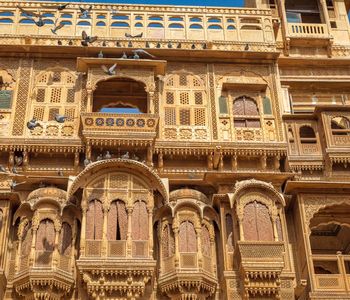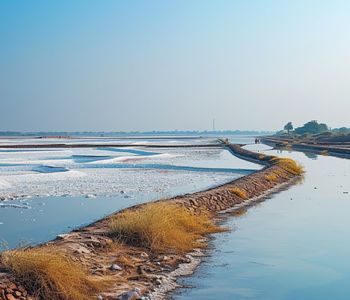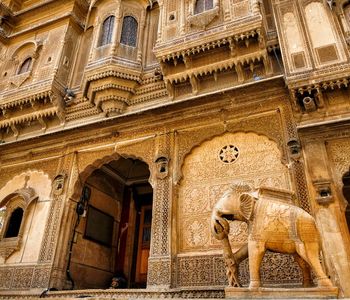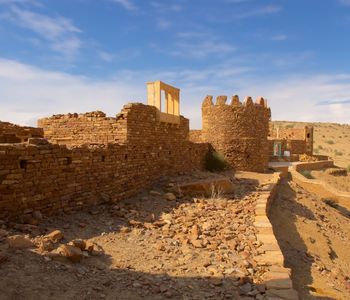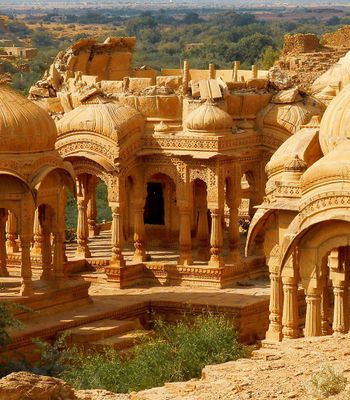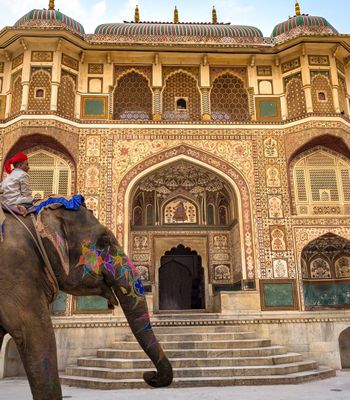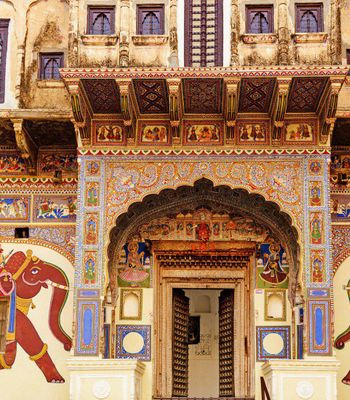Inside the tall walls of Jaisalmer Fort, surrounded by golden stone and the desert heat, stands a quiet and carefully carved temple: Shantinath Temple. It is one of seven Jain temples connected inside the fort.
Each one is named after a different Tirthankara, the spiritual leaders in Jainism. Together, they make up one of the most beautiful Jain temple groups in India.
Shantinath Temple is the most peaceful of them all. When the sunlight touches its sandstone walls, the temple glows like gold shining in the wind.
Born in a Time of Trade and Faith
The temple was built in 1536 during the rule of the Bhatti Rajputs. Though these rulers followed Hinduism, they supported the Jain traders who lived in the city.
Jaisalmer was a busy trading post back then, with caravans moving goods across the desert. Rich Jain merchants used their wealth to build temples like this one.
This particular temple honours Shantinath, who is recognised as the 16th Tirthankara in the Jain tradition. His name means "Lord of Peace."
His teachings were about non-violence, calm, and self-control, and the temple reflects those values. Over the years, it has been used not only for prayer but also for learning and quiet thought.
The origin of the Shantinath Temple is closely linked with the historical development of Jaisalmer Fort. The fort has stood for centuries, seeing battles, trade, and change.
Through all that, this temple has remained a place where people still come to find peace.
A Carving in Stone and Light
Shantinath Temple is known for its Dilwara-style architecture, a style famous for its fine detail and balance. The entire temple is made from yellow sandstone, the same stone that makes Jaisalmer look golden.
When light hits the walls, shadows dance across the carvings. Key architectural highlights include:
- Temple Details: Carvings cover the temple’s ceilings and walls in great detail. You’ll see elephants, dancers, gods, and flowers, all shaped with tiny, careful cuts. The designs mix both Hindu and Jain symbols.
- The Open Courtyard: You step into a wide courtyard surrounded by carved columns and archways. The pillars are tall and delicate, standing like quiet guards.
- Inside the Heart: From the courtyard, you walk into the mandapa—a hall with more pillars and carvings. At the end is the garbhagriha, the inner chamber. There, on a pedestal, sits the idol of Shantinath, carved in marble.
- All the Tirthankaras Together: The temple doesn’t just show Shantinath. Inside, there are idols of all 24 Jain Tirthankaras. This makes the temple very important for Jain pilgrims, who come here to honour every figure in their tradition.
Shantinath’s Highlights and Hidden Gems
Here are three places inside the Shantinath Temple that would be especially fun and fascinating to see:
The Inner Sanctum with the Idol of Shantinath
At its centre, the temple houses a finely sculpted marble statue of Shantinath, the 16th spiritual teacher of Jainism. The craftsmanship of the idol and the sanctum’s serene atmosphere make it a highlight for both spiritual seekers and lovers of art.
The Gyan Bhandar (Ancient Library)
Within the temple complex is a Gyan Bhandar, a library that houses rare manuscripts and ancient texts. This hidden gem offers a glimpse into the intellectual and religious history of Jainism and is a treat for anyone interested in history or rare books.
When the Temple Comes Alive
Shantinath Temple is quiet most of the year, but during Jain festivals, it glows with life. Here are the major celebrations:
- Mahavir Jayanti: The temple, filled with flowers, lamps, and joyful chants on the occasion, celebrates the birth of Lord Mahavira, the 24th Tirthankara.
- Paryushan: This is a time for reflection, fasting, and prayer. Special rituals are held. Visitors will see locals dressed in white, offering devotion and forgiveness.
Shantinath Temple is a spiritual anchor in Jaisalmer’s ancient fort, one of the few living forts in the world where people still reside. It also plays a role in Jaisalmer’s identity as a UNESCO World Heritage Site in the Khajuraho Group of Monuments, helping preserve Jain heritage in a region where temples often vanish with time. The whole structure rests within this living heritage, surrounded by homes, shops, and echoes of centuries-old life.
